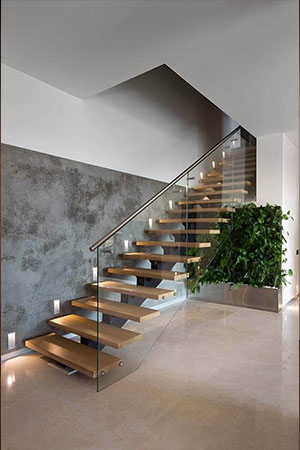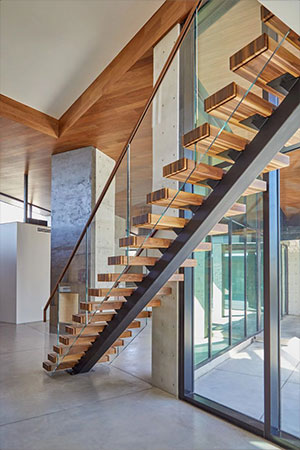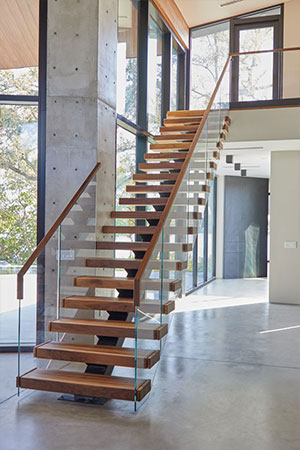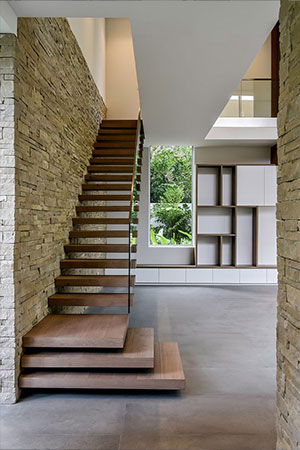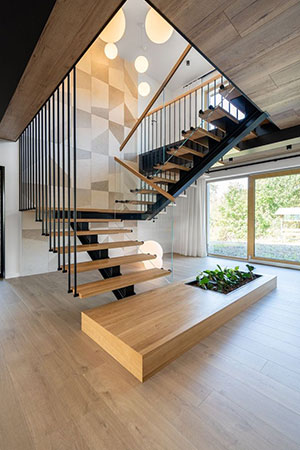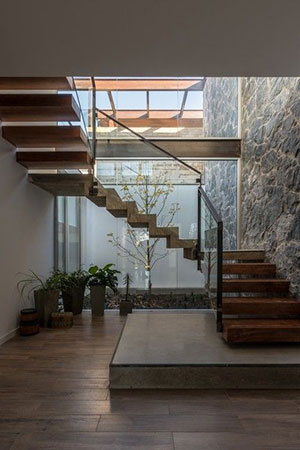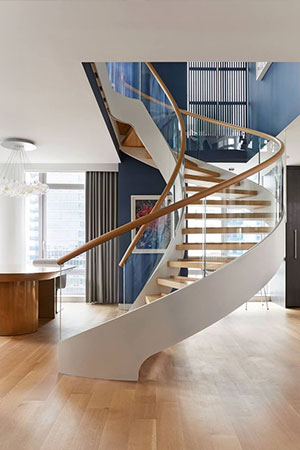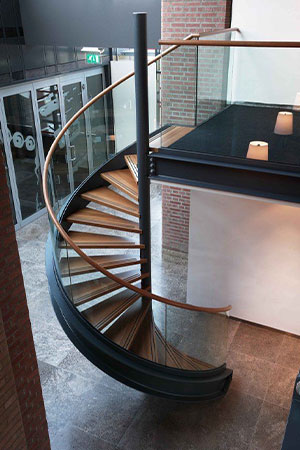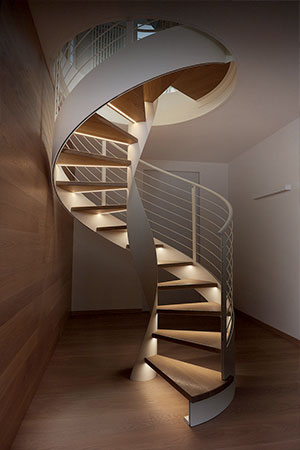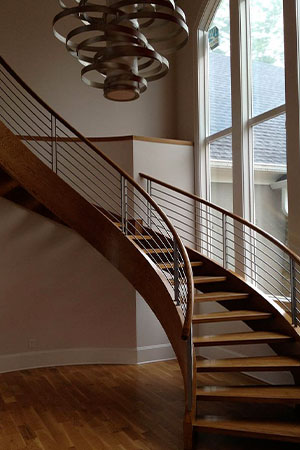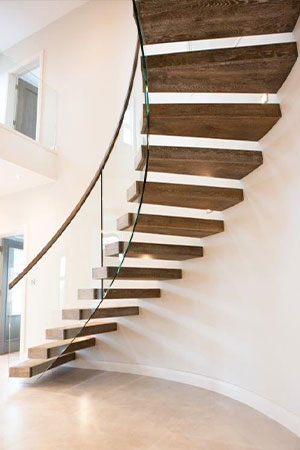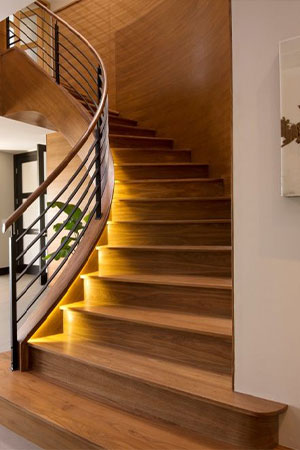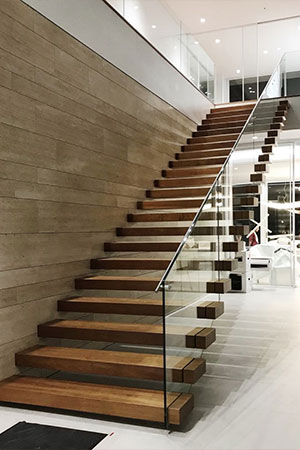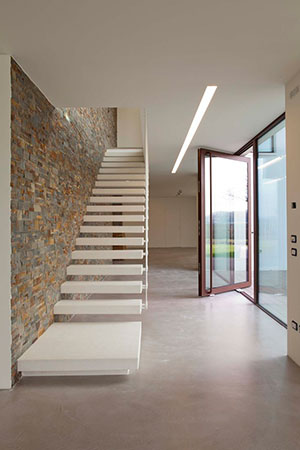The choice of stair type depends on factors like available space, architectural style, safety requirements, and design preferences. It's essential to consider the building code regulations and safety standards when designing and constructing stairs to ensure they are safe and compliant.
Straight Stairs
Straight stairs are the simplest and most common type. They consist of a straight, uninterrupted flight of steps between two levels.
L-shaped stairs
L-shaped stairs have a landing that changes the direction of the flight of stairs, forming an "L" shape. They are a space-efficient option.
U-shaped stairs
U-shaped stairs have two flights of stairs that go in opposite directions, connected by a landing in the middle, forming a "U" shape.
Spiral Stairs
Spiral stairs have a circular or helical design, which can save space. They are commonly used in small spaces or for decorative purposes.
Curved Stairs
Curved stairs have a flowing, curved design, often used in grand and elegant settings. They can be challenging to build.
Floating Stairs
Floating stairs, also known as cantilevered stairs, are visually striking because they appear to be unsupported.

